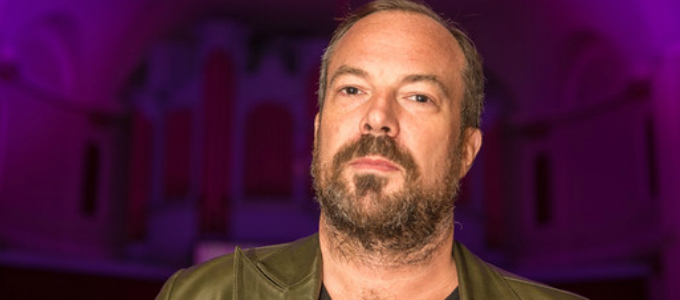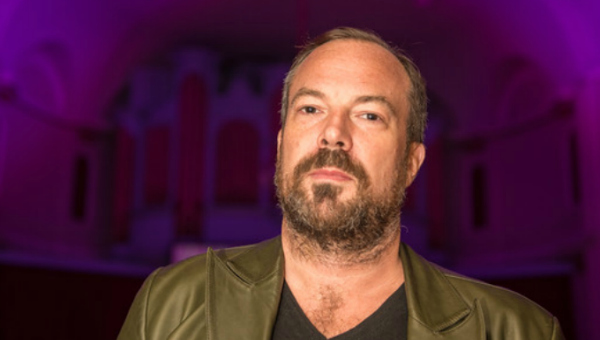
Simon Rumley explains the true crime story behind his film JOHNNY FRANK GARRETT’S LAST WORD, in his own words:
“In 1968 on Hallowe’en, a 76 year old nun was raped and murdered in her bedroom in a convent in Amarillo, Texas. The policemen couldn’t find who did it. In the end they arrested a 17 year old kid called Johnny Frank Garrett. He was very much from the wrong side of the tracks – he had problems at school, problems at home, the usual story. They took him to court and he always maintained his innocence. He got sentenced to death.
Ten years later, even after Pope John Paul II wrote to Ann Richards (who was then the Governor of Texas) to ask for a stay of execution, they still went ahead and executed him. And on the evening of his execution, he wrote a curse letter saying, basically, ‘Fuck you – if you had ever asked me I would tell you I was innocent, but you never asked me. I’m going to my death now, I’ve come to terms with that, I’m going to meet my maker – but I put a curse on you. And not only you, but whenever your mother, your father, your sister, your brother, your kids die – that will be me.’ And then, thereafter, people who were involved with the case started dying. It’s a true story but the film’s about a fictional juror who always thought Johnny was innocent. In a way, it’s almost the reverse of 12 ANGRY MEN. And then the kid of someone who is involved gets ill, and he’s gotta break the curse.”
Nick Kitchin: So this film is a horror movie, because the curse is real. But it’s also a polemic on our society – our views on punishment and the death penalty.
Simon Rumley: Yeah, very much so. But I was a director for hire on this film – I had no say whatsoever in the script. So it is a Hollywood film, and first and foremost a genre film. So the [execution and curse] basically take up the majority of the story. But when I was first investigating this, I’d just watched WEST OF MEMPHIS, and Werner Herzog’s INTO THE ABYSS, and I was hoping it was going to be a bit more like those but with some genre elements. So in the end it’s not as good as those films, and not as polemical on that kind of social justice stuff. But it’s more than your average horror film. Certainly the first fifteen minutes are quite deliberate, quite protracted. The court case, the jury deliberation, and then the execution is very slow and methodical. And then at the end we say, “We think Johnny Frank Garrett is innocent, and he’s never been pardoned by the state of Texas”. And his family tried to get them to pardon him because DNA testing had advanced. So in doing the film I’m hoping that people will find out a bit more about Johnny Frank Garrett and investigate him – and watching the film will push them in that direction.
NK: How did you go about casting it? Because it’s based on real events and you wanna get that right.
SR: The woman who cast this film I’ve worked with three times now, and she’s based in Austin. She’s called Karen Hallford. She did my last film, RED WHITE AND BLUE – she did my most recent film FASHIONISTA. Most of the characters I wasn’t worried about, but Johnny Frank Garrett, he’s quite an individual looking guy in real life, so I wanted someone kind of like him. I thought in reality that wasn’t gonna happen, but she said, “Actually, I’ve got someone that I really like. I’m not gonna tell you anything about him, just see him”. So this guy came in – completely unknown – he used to work in a local cinema in Austin. He had his shoulders kind of scrunched, he had dark brown hair like Johnny Frank Garrett kinda hung over his face, he was like 22 years old. He did an audition, he was very diffident, quite nervous and stuff. He did some lines, really did well, and I said “You know what? You’re great, would you do the role?” and he said “Yes”. And when he left, the casting director said, “You know what? I’m gonna go and get him, ’cause all of that was acting. He’s not really like that”. And I was like, “Shit, really?!” because even as a director you forget that actors act, and that’s their job! He’s a guy called Devin Bonnée. And he did such a great job in that film that I wrote a part for him in my new film FASHIONISTA, which we’ve just premiered in Austin. I think he’s an amazing actor, a lovely guy.
NK: What about the rest of the casting?
SR: Well, we’ve got Sean Patrick Flanery, he’s a very good actor. He’s actually from Texas so he knew the story, and it happened quite close to where he lived. So he read the script, loved it and wanted to be in it. So basically he was great, very nice to work with, and then all the other actors same as usual really. We wanted to get real people, not Hollywood actors, because the story started in ’68 and most of the story is ’79. Back in the day when there was no plastic surgery…
NK: Where did you shoot it?
SR: We shot in in Shreveport which is in Louisiana, because you get tax breaks there – so a lot of productions shoot there because they get 30% of their budget paid for by the local tax system. Having spent time in Texas I was reasonably good at that point at spotting what looked like authentic old school Texas and what didn’t.
NK: You don’t have problems shooting a film like this in Texas – the religious right and all the rest?
SR: Well, in Texas we actually did. We originally wanted to shoot it in Amarillo which was where the story took place. But Amarillo basically said, “No way”. So we decided to go to Louisiana, where the story isn’t so well known. And they were very happy to have us.
NK: How was the shoot?
SR: It was a five week shoot and then six weeks prep. I think nowadays you’ve got to be so careful, there’s so much money at stake. It’s not like the seventies, when people do APOCALYPSE NOW and they shoot for a year and the studio keeps giving them more money. Or when I saw HEAVEN’S GATE on a big screen for the first time – it’s amazing.
NK: So how do you get a film like this made?
SR: There’s an actor called Peter Facinelli who was in the Twilight series, and Nurse Jackie – he’s a great guy. He saw the documentary, bought the rights to that and then it went from there. The documentary’s called THE LAST WORD and it’s by a guy called Jesse and he was in real life a solicitor rather than a director. He’s very much against the death penalty and the doc (which is well worth checking out) details the legalese aspect of the whole film. Jesse saw him as someone who was being completely railroaded by the system, from the beginning of his life to the end. And you’ll see how he got arrested because of a fortune teller – a psychic basically had a vision and she went to the police. A policeman arresting someone because of a psychic is in my opinion ludicrous, but if you look at the actual history of what went down, I think the psychic’s boyfriend or husband was a failed drug dealer called “Heavy Duty”, who’d been arrested for trying to smuggle hash into the country. In the background there’s all of that stuff going on.
NK: You weren’t involved in the script but you managed to get some scenes in that you’d developed?
SR: What happened was, in Europe – or certainly in England, as a writer you’re used to drafting a script, having feedback and doing another – maybe you’ll do three drafts or eight or ten. In America it seems to work differently. You get one writer on board, and then give them notes, and then they’ll get another person on board. And it seems to go on ad infinitum, which is why you see something like THE FLINTSTONES with about twelve writer credits. Every writer does a first draft in what’s usually a very rushed time frame, and then it kind of progresses from there. So with this film I actually did write a draft, but in the end we didn’t use it. So some of my scenes did stay in the film. The scenes in the classroom, in the hotel, were very much my visuals and there were a few other things. It’s a weird situation where you’re not really in control of the script. Directing’s one thing but scriptwriting shapes everything way more than a director can. It was a first for me, but it was all an interesting experience – and here I am, almost four years later!
JOHNNY FRANK GARRETT’S LAST WORD has been released in the US via eOne/Momentum, and Rumley’s labour of love FASHIONISTA premiered at FrightFest Glasgow this year.
httpvh://youtu.be/_FLpIqtmato

